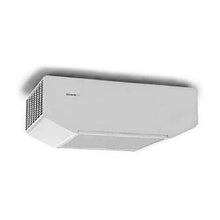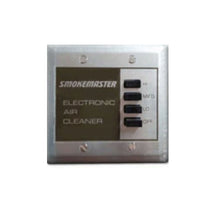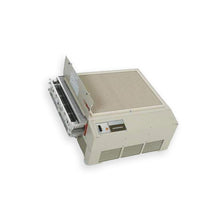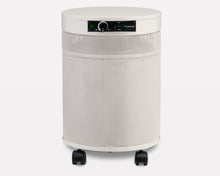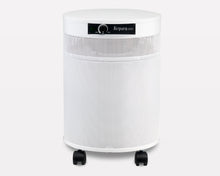Cigar Lounge Air Quality: Specialized Solutions for Heavy Smoke Environments
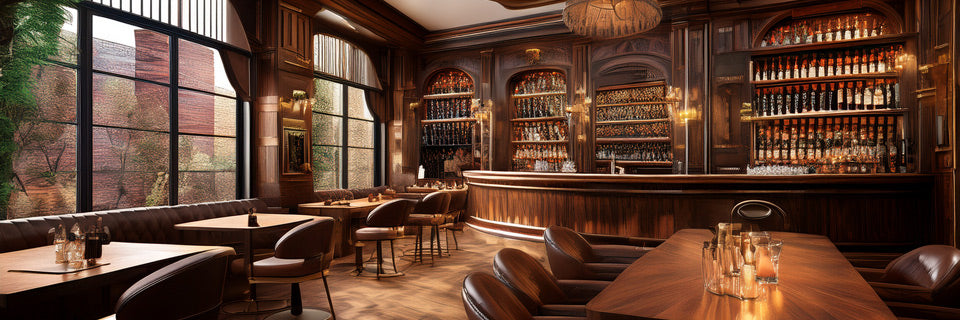
The rich aroma of premium tobacco and the convivial atmosphere of a well-appointed cigar lounge create an experience unlike any other. Yet beneath the surface of this sophisticated environment lies a critical challenge that affects both customer comfort and employee health: managing the complex air quality demands of heavy smoke environments. Whether you're a lounge owner seeking to create the perfect ambiance or a patron concerned about air quality, understanding the science behind effective cigar smoke air filtration can transform your experience from tolerable to exceptional.
The Hidden Complexity of Cigar Smoke Environments
Cigar smoke presents unique air quality challenges that extend far beyond what most people realize. Unlike cigarette smoke, cigar smoke contains larger particulate matter and produces significantly higher volumes of airborne contaminants per unit of time. According to research published in the Journal of Environmental Health, cigar smoke generates particles ranging from 0.1 to 10 micrometers, with the majority falling in the respirable range that can penetrate deep into lung tissue.
The Environmental Protection Agency's studies on indoor air quality reveal that cigar lounges can experience particulate matter concentrations 10-50 times higher than outdoor air quality standards. This isn't just about comfort—it's about creating an environment where patrons can enjoy their experience without compromising their immediate well-being or that of staff members who spend extended periods in these spaces.
What makes cigar smoke particularly challenging is its composition. Beyond the visible smoke, cigars release over 4,000 chemical compounds, including tar, nicotine, carbon monoxide, and various volatile organic compounds (VOCs). These substances don't just disappear when the cigar is finished; they linger in the air, settle on surfaces, and continue to affect air quality long after the last puff.
The social nature of cigar lounges compounds these challenges. Multiple patrons smoking simultaneously creates cumulative effects that can quickly overwhelm inadequate ventilation systems. During peak hours, a typical cigar lounge might have 20-30 active cigars burning simultaneously, each producing approximately 1-2 grams of particulate matter over its burn time.
Understanding Heavy Smoke Air Filtration Requirements
Effective heavy smoke air filtration requires a multi-layered approach that addresses both immediate particle removal and long-term air quality maintenance. The key lies in understanding that cigar smoke filtration isn't simply about moving air—it's about capturing, neutralizing, and eliminating specific types of contaminants at their source.
Research from the American Society of Heating, Refrigerating and Air-Conditioning Engineers (ASHRAE) demonstrates that successful cigar lounge air management requires air exchange rates of 15-20 air changes per hour, significantly higher than typical commercial spaces. However, simply increasing air movement without proper filtration can actually worsen the problem by spreading contaminants throughout the space.
The most effective systems combine high-efficiency particulate air (HEPA) filtration with activated carbon technology. HEPA filters capture particles as small as 0.3 micrometers with 99.97% efficiency, addressing the visible smoke particles that affect immediate comfort. Meanwhile, activated carbon filters tackle the molecular-level compounds responsible for odors and many health concerns.
Advanced heavy smoke air filtration systems also incorporate pre-filtration stages to extend the life of more expensive HEPA and carbon filters. These pre-filters capture larger particles and tar deposits before they can clog primary filtration media, ensuring consistent performance even in demanding environments.
The placement and design of air purification systems in cigar lounges requires careful consideration of airflow patterns. Ceiling-mounted units with directional airflow can create "clean air zones" where patrons can retreat from heavy smoke areas, while table-level units provide immediate relief at the point of smoke generation.
Real-World Performance Data
Independent testing conducted by the Indoor Air Quality Association found that properly designed cigar lounge air filtration systems can reduce particulate matter by 85-95% and eliminate odor-causing compounds by up to 90%. These results were achieved in active cigar lounges during normal operating conditions, demonstrating the real-world effectiveness of specialized air purification technology.
One case study from a premium cigar lounge in Denver showed that implementing a comprehensive air filtration system reduced customer complaints about air quality by 78% and led to a 23% increase in average visit duration. More importantly, employee health metrics improved significantly, with reported respiratory irritation decreasing by 65% over a six-month period.
The Science Behind Effective Smoke Removal
Understanding the physics and chemistry of smoke removal helps explain why generic air purification solutions often fall short in heavy smoke environments. Cigar smoke particles exist in multiple size ranges, each requiring different removal strategies.
Large particles (above 2.5 micrometers) are relatively easy to capture using mechanical filtration. These visible smoke particles give air its hazy appearance and are responsible for immediate visual comfort. Standard HVAC filters can handle these larger particles, though they quickly become saturated in high-smoke environments.
The real challenge lies in removing fine and ultrafine particles (below 1 micrometer). These particles remain suspended in air for hours and can only be effectively removed through high-efficiency filtration systems or electrostatic precipitation. Research published in Atmospheric Environment shows that these smaller particles carry a disproportionate amount of harmful compounds and are most likely to penetrate deep into respiratory systems.
Gaseous contaminants present an entirely different challenge. Compounds like aldehydes, phenols, and various organic acids can't be captured by particle filters alone. These molecules require chemical absorption or adsorption processes, typically achieved through activated carbon or specialized chemical media.
The most sophisticated cigar smoke air filtration systems employ a combination of technologies working in sequence. Air first passes through pre-filters to remove large particles and tar, then through HEPA filtration for fine particle removal, and finally through multiple stages of activated carbon for gaseous contaminant elimination.
Addressing Specific Smoke Components
Tar and nicotine residues create particular challenges because they're sticky and tend to coat filtration media quickly. Advanced systems use wash able pre-filters or specialized media designed to handle these compounds without rapid degradation. Some systems incorporate UV-C light technology to break down certain organic compounds, though this must be carefully integrated to avoid producing harmful byproducts.
Carbon monoxide, while not directly filterable, is often diluted to safe levels through proper ventilation design. However, this requires careful balance—too much outside air in winter climates can create uncomfortable temperature and humidity conditions, while too little can allow dangerous accumulations.
Designing Solutions for Different Lounge Types
Not all cigar lounges face identical air quality challenges. A small, intimate smoking room requires different solutions than a large commercial cigar bar with full food and beverage service. Understanding these distinctions is crucial for implementing effective air quality management.
Private Smoking Rooms and Home Lounges
Smaller spaces benefit from point-of-use air purification systems that can be positioned strategically near seating areas. These environments typically have lower total smoke loads but may experience higher concentrations due to limited space. Solutions like portable air purifiers with activated carbon and HEPA filtration can provide substantial improvements without requiring major infrastructure modifications.
The key in smaller spaces is creating localized clean air zones. Table-top or floor-standing units positioned to draw air from smoking areas and discharge clean air toward seating can create comfortable microclimates within the larger space.
Commercial Cigar Lounges and Bars
Larger commercial establishments require integrated HVAC solutions that work seamlessly with existing building systems. These facilities often need custom-designed air handling systems that can manage both smoke removal and general comfort conditions like temperature and humidity control.
The most successful commercial installations combine overhead air handling with supplemental point-of-use systems. This hybrid approach provides general air quality management while allowing for enhanced filtration in high-use areas like bar seating or private smoking sections.
Outdoor and Semi-Outdoor Spaces
Even covered outdoor smoking areas can benefit from air quality management, particularly in spaces with limited natural airflow. Portable units designed for outdoor use can significantly improve comfort in covered patios or enclosed courtyards where smoke tends to accumulate.
These applications often focus more on odor control than particle removal, since natural dilution handles much of the particulate matter. Activated carbon systems excel in these environments, neutralizing odor compounds that might otherwise affect neighboring areas.
Health Considerations and Regulatory Compliance
The health implications of cigar smoke exposure extend beyond immediate comfort concerns. The World Health Organization's research on secondhand smoke exposure demonstrates that even brief periods in high-smoke environments can affect cardiovascular and respiratory function in sensitive individuals.
For cigar lounge operators, understanding local air quality regulations is essential. Many jurisdictions have specific requirements for indoor air quality in smoking establishments, including minimum ventilation rates and filtration standards. Some areas require regular air quality monitoring and documentation of compliance efforts.
Employee health considerations are particularly important from both ethical and legal perspectives. Staff members who spend full shifts in smoke-filled environments face cumulative exposures that can exceed recommended limits. Effective air purification systems aren't just about customer comfort—they're about creating safe working conditions for employees.
Recent studies published in Occupational and Environmental Medicine show that comprehensive air quality management in smoking establishments can reduce employee exposure to harmful compounds by 70-85%. This reduction brings exposure levels closer to those found in non-smoking establishments, significantly improving workplace safety.
Building a Culture of Air Quality Awareness
The most successful cigar lounges treat air quality as an integral part of their customer experience rather than a necessary compliance measure. This approach involves educating staff about air quality systems, encouraging customer feedback, and maintaining transparent communication about air quality efforts.
Regular maintenance schedules, proper filter replacement, and system monitoring create the foundation for consistent performance. Many establishments find that visible air quality displays or real-time particle counters help customers understand and appreciate their air quality efforts.
Practical Implementation Strategies
Implementing effective cigar smoke air filtration requires careful planning and consideration of multiple factors beyond just equipment selection. The most successful installations result from understanding the specific challenges of each environment and designing solutions that integrate seamlessly with existing operations.
Assessment and Planning
Begin with a comprehensive air quality assessment during typical operating conditions. This baseline measurement helps identify problem areas, peak load times, and specific contaminant concerns. Professional air quality consultants can provide detailed analyses that inform system design decisions.
Consider occupancy patterns when designing solutions. Peak smoking times may require different filtration capacities than off-peak periods. Some establishments benefit from variable-speed systems that automatically adjust to current smoking loads.
System Integration
The best air purification systems work invisibly within the lounge environment. Noise levels, visual impact, and operational requirements should all factor into equipment selection. Systems that require frequent maintenance or create operational disruptions often fail to provide long-term benefits.
Integration with existing HVAC systems requires careful coordination to avoid conflicts between different air handling approaches. In some cases, existing ventilation systems may need modifications to work effectively with specialized smoke filtration equipment.
Maintenance and Monitoring
Even the most advanced air purification systems require regular maintenance to maintain effectiveness. Establishing clear maintenance schedules, training staff on basic system monitoring, and developing relationships with qualified service providers ensures long-term success.
Regular filter replacement is critical but often overlooked. Saturated filters not only lose effectiveness but can actually become sources of contamination as trapped particles and compounds are released back into the air. Many modern systems include filter life monitoring to prevent this problem.
Frequently Asked Questions
Q: How often should air filters be replaced in a cigar lounge environment?
A: Filter replacement frequency depends on usage levels and filter types. Pre-filters in heavy-use environments may need monthly replacement, while HEPA filters typically last 6-12 months. Activated carbon filters usually require replacement every 3-6 months, depending on smoke loads. Systems with filter life monitoring provide more accurate replacement timing than calendar-based schedules.
Q: Can air purification completely eliminate cigar smoke odors?
A: While high-quality systems can reduce odors by 85-95%, complete elimination is challenging due to the complex chemical composition of cigar smoke. However, properly designed systems can reduce odors to levels that don't affect customer comfort or extend beyond the smoking area.
Q: What's the difference between commercial and residential air purification for smoke?
A: Commercial systems typically handle much higher smoke loads and run continuously, requiring more robust construction and higher-capacity filtration. Residential systems focus more on occasional use and may prioritize quieter operation over maximum filtration capacity.
Q: How much does effective cigar lounge air filtration cost?
A: Costs vary widely based on space size and requirements. Portable units for small spaces start around $500-1,500, while comprehensive commercial systems can range from $5,000-25,000 or more. Operating costs including filter replacements typically run $2,000-5,000 annually for commercial installations.
Q: Do air purification systems affect the taste or experience of smoking cigars?
A: Properly designed systems should not affect the smoking experience. The goal is to remove smoke after it's produced, not to interfere with the smoking process itself. Some patrons report that cleaner air actually enhances their ability to taste subtle cigar flavors by reducing background smoke interference.
Creating the Optimal Cigar Lounge Experience
The intersection of tradition and technology in modern cigar lounges creates opportunities to enhance rather than compromise the classic smoking experience. Effective air quality management isn't about eliminating the ambiance of cigar smoke—it's about controlling it to create the perfect balance between authentic atmosphere and comfortable, healthy conditions.
The most successful cigar lounges understand that air quality directly impacts customer satisfaction, employee health, and long-term business sustainability. By investing in proper heavy smoke air filtration systems, establishments can create environments where the focus remains on fellowship, conversation, and the appreciation of fine tobacco rather than on air quality concerns.
The technology exists today to manage even the most challenging smoke environments effectively. The key lies in understanding the specific requirements of each situation and implementing solutions that address both immediate comfort and long-term air quality goals. Whether you're planning a new establishment or improving an existing one, prioritizing air quality management creates benefits that extend far beyond regulatory compliance.
For cigar enthusiasts and industry professionals alike, the future of cigar lounges lies in environments that honor tradition while embracing the tools and knowledge necessary to create truly exceptional experiences. In this balance between heritage and innovation, effective air quality management plays an essential role in preserving and enhancing the culture of cigar appreciation for generations to come.
For more information about air quality solutions and to explore specific options for your environment, consult with certified air quality professionals who specialize in smoking establishment applications. The investment in proper air quality management pays dividends in customer satisfaction, employee health, and operational success.

